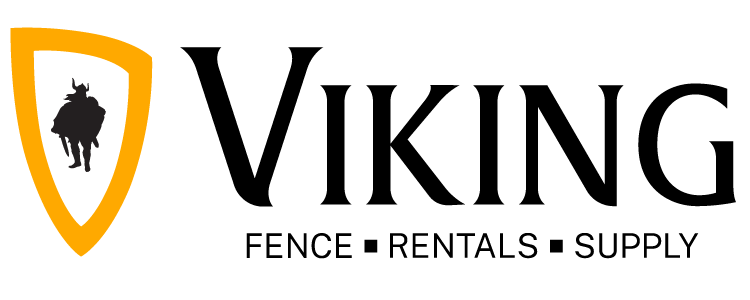
Understanding OSHA’s hand wash station requirements can be a huge source of stress and uncertainty for those managing a job site or event. The consequences of non-compliance and the workplace safety concerns that accompany are not something you should take lightly.
Yet, with constant evolution and technical jargon, how can you feel confident knowing your hand wash stations are up to par? We’re here to help.
OSHA mandates accessible hand washing facilities with clean water, soap, and towels, ensuring workers can maintain hygiene, especially where bathrooms are not readily available. Hand wash stations must also be in close proximity to work areas to facilitate regular use.
There’s no need to let the stress of compliance weigh you down. Viking Rental offers a top-tier selection of sanitation solutions for rent, including our portable hand washing stations:
- Portable hand wash station rental Dallas
- Portable hand wash stations rental Austin
- Portable hand wash stations rental Houston
- Portable hand wash stations rental Fort Worth
So, get in touch today and put the concern of OSHA hand washing station requirements in the past for good. With more than 50 years of experience to our name, it’s clear why Texas businesses trust us for all things sanitation rentals!
Overview of OSHA
The Occupational Safety and Health Administration (OSHA) is the federal agency responsible for ensuring safe and healthy working conditions by setting and enforcing standards.
Founded under the Occupational Safety and Health Act of 1970, OSHA’s role extends to a wide range of workplaces, from construction sites to manufacturing plants.
OSHA’s comprehensive standards cover various aspects of workplace safety, including the provision of hand washing stations. These stations are critical in preventing the spread of contaminants and protecting worker health, particularly in industries where employees are regularly exposed to hazardous materials.
Adhering to OSHA’s guidelines is paramount for businesses to safeguard their workforce and shield themselves from potential liabilities. But before we get into those guidelines, let’s highlight the role of hand washing stations in the first place.
The Role of Hand Washing Stations
Hand washing stations are a critical component in maintaining a hygienic work environment, particularly in industries where employees are exposed to harmful substances or engaged in activities that promote the spread of germs.
OSHA recognizes the significance of hand hygiene in preventing illness and infection, which is why specific regulations are in place to ensure that workers have access to hand-washing facilities.
These stations serve as a first line of defense in reducing the transmission of diseases and contaminants that can be detrimental to employee health and productivity.
In settings where workers handle chemicals, raw materials, or engage in tasks that soil hands, proper hand washing is not just a matter of personal cleanliness but a strict safety procedure.
By providing well-maintained hand washing stations, employers demonstrate a commitment to the well-being of their workforce and adherence to health and safety regulations.
But a simple sink with a soap dispenser may not be enough through the lens of OSHA. So, let’s dive deep into the OSHA hand wash station requirements below so you can feel confident ensuring your workplace aligns.
What are the OSHA Hand Wash Station Requirements?
While OSHA’s requirements for hand washing stations are constantly evolving, we’ll highlight the key guidelines as of March 2024 so that you can rest assured you’re doing your part to:
- Give your employees the clean, safe environment they deserve.
- Avoid the consequences of non-compliance should an OSHA inspection come your way.
There are a few things you need to focus on: accessibility, water source/quality, soap, drying, and industry-specific considerations.
Accessibility: Location and Number of Stations
OSHA stipulates that hand washing facilities must be readily accessible to employees. This means that the stations should be located within a reasonable distance from the work area, reducing the time and effort required for employees to maintain hand hygiene.
For construction sites, for example, OSHA requires that hand washing facilities be provided if there are 11 or more employees working where contamination can occur, and if running water is not available, provisions for alternative methods like water containers and soap must be made.
OSHA also requires a sufficient number of stations to accommodate the size of the workforce, preventing long wait times and encouraging regular use.
The exact number may vary depending on the industry and the number of employees, but the underlying goal is to ensure that every worker has the opportunity to wash their hands as needed throughout their shift.
Water Quality and Temperature Standards
OSHA mandates that hand washing facilities provide clean water that is safe for employees to use. The water must be potable, meaning it is suitable for drinking and free from harmful levels of contaminants. This ensures that workers are not exposed to additional risks when cleaning their hands.
Temperature standards are also addressed by OSHA, which requires that hand washing stations provide lukewarm water to encourage frequent use and effective cleaning.
While OSHA does not specify an exact temperature range, lukewarm water generally refers to temperatures that are comfortable to the touch, neither too hot nor too cold.
Soap, Towel, and Drying Equipment Provisions
In addition to water, OSHA requires that hand washing stations be equipped with soap to enable proper cleaning as it is essential for removing oils, dirt, and microorganisms from the skin. Employers must ensure that an adequate supply of soap is available at all times.
Hand drying provisions are also required. This can include individual hand towels, paper towels, air blowers, or clean sections of continuous cloth towels. The method chosen should be effective at drying hands and not contribute to the spread of contaminants.
Industry-Specific Hand Washing Station Requirements
While OSHA sets general guidelines for hand washing stations, there are industry-specific regulations that must be adhered to.
For instance, in the food service industry, additional rules from the Food and Drug Administration (FDA) may apply, requiring hand washing stations to be placed in specific locations such as restrooms and food preparation areas to prevent cross-contamination.
In healthcare settings, hand washing stations must be readily available in patient care areas to ensure that healthcare workers can perform hand hygiene before and after patient contact, as well as after contact with potentially infectious materials. This is crucial in preventing the spread of healthcare-associated infections.
In the manufacturing and construction industries, where workers may be handling hazardous substances, it’s essential that hand washing facilities are equipped to deal with the removal of these specific contaminants.
This could mean providing stations with non-abrasive hand cleaners that can remove industrial substances like grease, oils, and chemicals without damaging the skin.
Furthermore, emergency eyewash and shower facilities must be provided in addition to hand washing stations in certain high-risk environments to offer immediate decontamination in the event of exposure to harmful substances.
Tips to Ensure Your Operations Meets the OSHA Hand Wash Station Requirements
Knowing the OSHA hand wash station requirements is just the first step. Now, it’s a matter of ensuring your job site or facility is aligned with those guidelines so you can stay compliant. Here are some tips you can implement:
Regular Maintenance and Restocking Procedures
Establish a routine maintenance schedule for all hand washing stations. This includes checking for any damage to the facilities, ensuring that water flow and temperature are within the required standards, and verifying that soap and drying equipment are fully stocked.
Regular maintenance prevents unexpected shortages and ensures that hand washing stations are always in optimal condition. Assign this responsibility to a designated staff member or team to create accountability.
Keep a maintenance log for each station to document checks and any actions taken. This not only helps in monitoring the condition of your hand-washing facilities but also serves as evidence of your compliance efforts during inspections.
Employee Training and Signage for Proper Use
Educate your employees on the importance of hand hygiene and the correct way to wash their hands. Effective hand washing involves scrubbing hands with soap for at least 20 seconds, rinsing thoroughly, and drying with a clean towel or air dryer.
Training should also cover when to wash hands, such as after using the restroom, before eating, and after handling contaminants.
Use clear signage to remind employees of hand washing techniques and the locations of hand washing stations. Signage acts as a constant visual cue, reinforcing the training and encouraging compliance with hand hygiene practices. Again, though, it also serves as a means of covering yourself in case of an inspection.
Periodic Review and Compliance Checklists
Conduct periodic reviews of your hand washing stations to ensure they meet OSHA’s requirements. As we mentioned earlier, they are constantly evolving.
Develop a compliance checklist based on OSHA standards that can be used during these reviews. The checklist should include items such as accessibility, water quality, availability of soap and towels, and proper signage.
Rent High-Quality Hand Washing Stations and Other Sanitation Solutions at Viking Rental for Compliance Peace of Mind!
The best way to prevent headaches and stress associated with OSHA hand wash station requirements? Invest in our portable sanitation rentals here at Viking Rentals. Our meticulously designed stations are the gold standard, ensuring your compliance with OSHA regulations is effortless and reliable.
The portable hand washing station rental cost pales in comparison to the consequences of non-compliance. While a DIY portable hand washing station is tempting, you’re paying for peace of mind when you partner with us.
We have more than 50 years of experience under our belts and have earned the trust of countless Texas businesses along the way. Here are our most popular solutions:
- The 2-Unit Sink: Its compact design means it takes up minimal space while providing maximum utility. Built-in lift handles make it a breeze to position wherever cleanliness is needed. Equipped with two high-capacity soap dispensers and four paper towel holders, accommodating multiple users simultaneously. For added comfort, opt for the version with a water heater, allowing guests the luxury of warm water to cleanse their hands (subject to availability).
- The Single Hand Sanitizer Unit: Easy to install on portable toilets or walls, it uses foam refills to reduce waste and increase the number of uses per refill. Unlike gels or liquids that can slide off and waste product, the foam stays on hands, ensuring thorough coverage and cleanliness.
- The 2-Unit Hand Sanitizer: Designed for convenience, our 2-Unit Hand Sanitizer station fits seamlessly both indoors and out. Its slim profile and double-sided design offer easy access to foam sanitizing dispensers. Ideal for a variety of settings like hospitals, restaurants, gyms, schools, or supermarkets, it’s a versatile choice that ensures your guests’ hands are germ-free.
- The 4-Unit Hand Sanitizer: Perfect for large gatherings or bustling job sites. This station delivers alcohol-free antiseptic foam that eradicates 99% of germs, including notorious bacteria like E. coli and salmonella. It’s gentle enough for children yet robust enough for the toughest of workers, making it a crowd-pleaser at any event, especially where food is served.
Not sure which is right for you? No need to play the guessing game or risk making the wrong choice. You can leverage our half a century of experience, as we’re happy to offer a personalized recommendation after talking over your needs.
You can also count on us for all the various types of porta potties, ranging from traditional porta potties rental to ADA portable toilets rental, bathroom trailer rentals, and even holding tank rental.
So, what are you waiting for? Say goodbye to the stress and uncertainty of OSHA hand wash station requirements by choosing Viking Rental. Get a quote today and turn your attention to more pressing matters in your operation!
Bringing Our Guide on OSHA Hand Wash Station Requirements to a Close
In summary, adhering to OSHA’s hand wash station requirements is crucial for workplace safety and compliance. Provide accessible, well-maintained, and properly equipped hand washing facilities and you won’t have anything to worry about.
Remember, a proactive approach to hand hygiene not only meets regulatory obligations but also promotes overall health and well-being in your workplace. Even without OSHA guidelines, this is an area worth investing in.
Our blog has more resources to help you maintain hygiene and compliance. Learn about the cost to rent porta potty, how much does it cost to rent a bathroom trailer, ADA portable toilet dimensions, porta potty vs bathroom trailer, DIY bathroom trailer, price for ADA porta potty, and more.
Whether you’re wondering where to rent a porta potty or a portable hand wash station that aligns with OSHA’s requirements, remember that Viking Rental in Texas is your trusted provider.
Take the first step towards a compliant, healthy work environment. Request a quote at Viking Rental now to discuss our hand hygiene solutions that align with OSHA standards.

